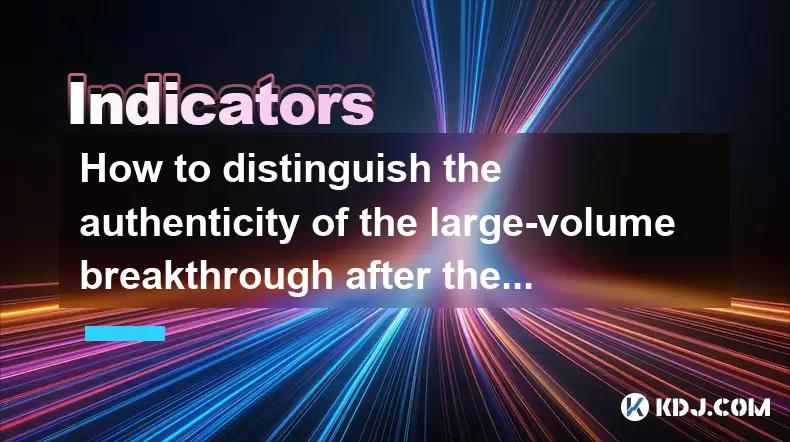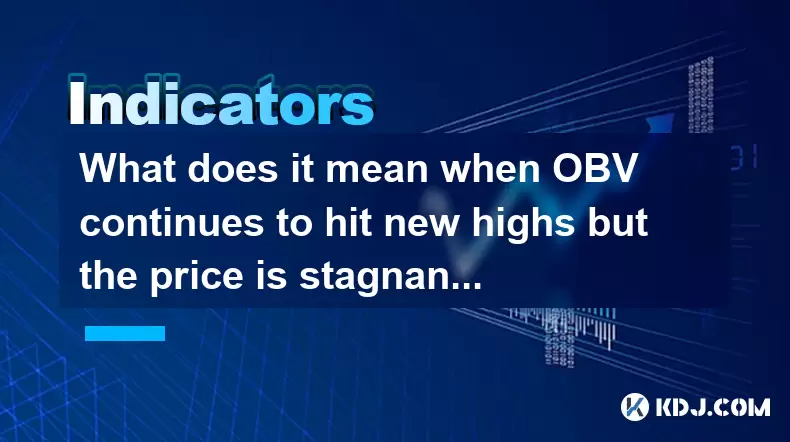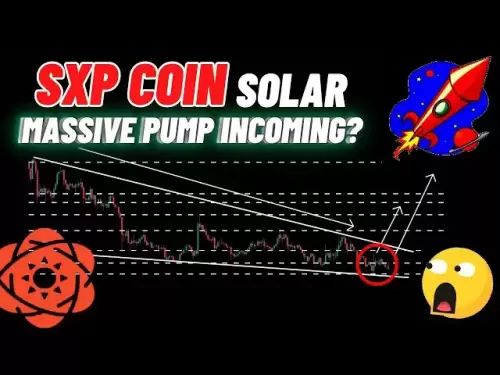-
 Bitcoin
Bitcoin $117500
2.04% -
 Ethereum
Ethereum $3759
3.02% -
 XRP
XRP $3.171
3.30% -
 Tether USDt
Tether USDt $1.000
0.03% -
 BNB
BNB $782.4
2.52% -
 Solana
Solana $187.2
5.62% -
 USDC
USDC $0.0000
0.02% -
 Dogecoin
Dogecoin $0.2380
5.26% -
 TRON
TRON $0.3175
1.07% -
 Cardano
Cardano $0.8227
4.03% -
 Hyperliquid
Hyperliquid $44.50
5.44% -
 Sui
Sui $4.020
10.07% -
 Stellar
Stellar $0.4396
6.28% -
 Chainlink
Chainlink $18.32
4.55% -
 Hedera
Hedera $0.2628
10.71% -
 Bitcoin Cash
Bitcoin Cash $554.8
4.90% -
 Avalanche
Avalanche $24.20
4.60% -
 Litecoin
Litecoin $113.7
2.31% -
 Shiba Inu
Shiba Inu $0.00001413
5.99% -
 UNUS SED LEO
UNUS SED LEO $8.984
0.11% -
 Toncoin
Toncoin $3.326
7.22% -
 Ethena USDe
Ethena USDe $1.001
0.00% -
 Uniswap
Uniswap $10.49
4.56% -
 Polkadot
Polkadot $4.092
4.02% -
 Monero
Monero $326.6
1.30% -
 Dai
Dai $1.000
-0.01% -
 Bitget Token
Bitget Token $4.570
2.49% -
 Pepe
Pepe $0.00001267
5.10% -
 Aave
Aave $297.3
3.10% -
 Cronos
Cronos $0.1344
4.10%
How to distinguish the authenticity of the large-volume breakthrough after the moving average is glued together?
Moving averages converging signal consolidation, often preceding big moves in crypto—watch for high-volume breakouts, sustained momentum, and on-chain confirmation to validate the direction.
Jul 25, 2025 at 02:14 am

Understanding the Moving Average Convergence Phenomenon
When moving averages converge, it typically indicates a period of consolidation in the price action. This occurs when short-term, medium-term, and long-term moving averages—such as the 5-day, 10-day, 20-day, and 50-day—come very close together, visually appearing to be “glued.” This tight clustering suggests that the market lacks a strong directional bias. In the cryptocurrency market, where volatility is high, such phases often precede significant price movements. The convergence itself is neutral; it does not indicate bullish or bearish sentiment. Traders must wait for a breakout to determine the next potential direction. However, not all breakouts are reliable. A large-volume breakout after this convergence raises the probability of a genuine trend resumption, but confirmation is required before taking action.
Key Indicators of a Genuine Breakout
To assess whether a breakout is authentic, traders should analyze several elements. First, volume must be significantly higher than the average volume observed during the consolidation phase. A surge in volume confirms strong participation and reduces the likelihood of a false move. For instance, if the average daily volume during the glue period was 1,000 BTC, a breakout day with 3,000 BTC traded adds credibility. Second, the closing price must remain beyond the consolidation range for at least two consecutive periods (e.g., candles). A breakout that quickly reverses back into the range is suspect. Third, the price must sustain momentum in the breakout direction over the following sessions. A single spike is insufficient. The combination of these factors increases confidence in the authenticity of the move.
- Check that volume exceeds the 20-period average volume by at least 150%
- Confirm that the closing price stays outside the consolidation band for two consecutive candles
- Observe whether follow-through buying or selling pressure continues in the next 3–5 periods
- Use on-chain data to verify if large wallets are participating in the breakout direction
Using Multiple Timeframe Analysis for Confirmation
A breakout on a single timeframe may be misleading. To validate the move, examine higher and lower timeframes. For example, if a 4-hour chart shows a breakout after moving average convergence, check the daily chart to see if the price is approaching a key resistance or support level. If the breakout occurs near a historical high with strong resistance, the move may fail despite high volume. Conversely, if the daily chart shows weakening selling pressure and the price breaks above a descending trendline, the breakout gains strength. Simultaneously, review the 1-hour chart to assess the internal structure of the breakout candle. Was it a single long candle, or did price climb steadily? A steady climb with consistent volume is more trustworthy than a wick-heavy spike.
- Align the breakout direction with the trend on the daily timeframe
- Look for reduced selling pressure (lower volume on down moves) in the days preceding the breakout
- Confirm that the breakout candle does not have long upper or lower wicks indicating rejection
- Cross-verify with order book depth on major exchanges to see if liquidity supports the move
Integrating On-Chain and Sentiment Metrics
Technical patterns alone are insufficient in the crypto space, where sentiment and whale activity heavily influence price. On-chain data can provide early signals about the legitimacy of a breakout. Tools like Glassnode or CryptoQuant allow traders to monitor metrics such as Exchange Netflow, which shows whether coins are being moved to or from exchanges. A genuine bullish breakout is often preceded by net outflows from exchanges, indicating accumulation. Additionally, check the SOPR (Spent Output Profit Ratio). If SOPR remains above 1 during and after the breakout, it suggests that most coins being moved are in profit, which can sustain buying pressure. Conversely, if SOPR drops below 1 shortly after the breakout, sellers may regain control.
- Monitor Exchange Netflow: sustained outflows support bullish breakouts
- Analyze SOPR: values above 1.0 during breakout indicate profitable selling, which is sustainable
- Track MVRV (Market Value to Realized Value) ratio to determine if the asset is overvalued post-breakout
- Use social sentiment tools like Santiment to check if retail enthusiasm is premature or aligned with institutional activity
Practical Steps to Validate the Breakout in Trading Platforms
Executing a proper validation process on trading platforms requires a structured approach. Begin by setting up your chart with multiple moving averages: 5 EMA, 20 EMA, 50 SMA, and 200 SMA. Enable volume bars and set a 20-period average volume line. When the averages converge, draw horizontal support and resistance lines around the consolidation zone. Once price moves beyond these levels, activate alerts for volume spikes. Use a platform like TradingView or Bybit’s advanced charting tools to backtest similar past scenarios. For real-time validation:
- Enable volume profile to see if the breakout occurs at a high-volume node
- Add the CMF (Chaikin Money Flow) indicator; a reading above 0.3 confirms buying pressure
- Overlay the VWAP (Volume Weighted Average Price); price holding above VWAP post-breakout is positive
- Avoid entering immediately; wait for a retest of the breakout level with reduced volume
Frequently Asked Questions
Can a breakout be authentic even if volume is only slightly above average?
A breakout with marginal volume increase is typically unreliable. Authentic breakouts require substantial volume to demonstrate broad market participation. Slight volume increases may reflect noise or short-term speculation rather than institutional or whale involvement. In crypto, where manipulation is possible, low-volume breakouts often reverse quickly.
How long should the moving averages remain glued before a breakout is meaningful?
There is no fixed duration, but a consolidation period of at least 5 to 10 candles on the 4-hour chart provides a more reliable base. Shorter consolidations may lack the inertia needed for a strong breakout. The longer the averages stay compressed, the greater the potential energy for a sustained move—provided volume confirms the breakout.
Does the direction of the moving average slope before convergence matter?
Yes. If the moving averages were sloping upward before converging, the subsequent breakout is more likely to be bullish, as it reflects a pause in an uptrend. Conversely, if the averages were declining, a bullish breakout requires stronger confirmation to override the prior downtrend. The pre-convergence trend provides context for interpreting the breakout.
What role does Bitcoin’s price action play in validating altcoin breakouts?
Bitcoin often acts as a leading indicator. If an altcoin breaks out while Bitcoin is in a neutral or bullish phase, the move is more credible. However, if Bitcoin is sharply declining, the altcoin breakout may be short-lived. Always cross-check the BTC/USD trend before acting on altcoin signals.
Disclaimer:info@kdj.com
The information provided is not trading advice. kdj.com does not assume any responsibility for any investments made based on the information provided in this article. Cryptocurrencies are highly volatile and it is highly recommended that you invest with caution after thorough research!
If you believe that the content used on this website infringes your copyright, please contact us immediately (info@kdj.com) and we will delete it promptly.
- Pi Coin, Wallet Features, and Coinbase: What's the Buzz?
- 2025-07-26 18:30:12
- Worldcoin, Punisher Coin, and the Meme Coin Mania: What's the Haps?
- 2025-07-26 18:30:12
- Dogecoin Trajectory: From Meme to Mainstream and Beyond in Crypto
- 2025-07-26 17:10:14
- LasMeta, Pyth Network, NovaDrop NFTs: Decoding the Buzz
- 2025-07-26 16:30:12
- SHIB Long/Short: Riding the Shiba Inu Waves Like a Pro
- 2025-07-26 17:50:12
- VeChain (VET) Price Prediction: Will VET Reach $0.040 in August 2025?
- 2025-07-26 16:50:12
Related knowledge

What does it mean that the rebound is blocked after the moving average is arranged in a short position for the first time?
Jul 26,2025 at 10:51am
Understanding the Short-Term Moving Average ConfigurationWhen traders refer to a 'short position arrangement' in moving averages, they are describing ...

What does it mean when the price rises along the 5-day moving average for five consecutive days?
Jul 26,2025 at 08:07am
Understanding the 5-Day Moving Average in Cryptocurrency TradingThe 5-day moving average (5DMA) is a widely used technical indicator in cryptocurrency...

What does it mean when ADX breaks through 25 and +DI continues to rise?
Jul 26,2025 at 07:00pm
Understanding the ADX Indicator and Its ThresholdsThe Average Directional Index (ADX) is a technical analysis tool used to measure the strength of a t...

What does it mean when the price breaks through the 60-day moving average with a large volume but shrinks the next day?
Jul 26,2025 at 06:01am
Understanding the 60-Day Moving Average in Cryptocurrency TradingThe 60-day moving average (60DMA) is a widely used technical indicator in the cryptoc...

What does the sudden rise of ADX in DMI accompanied by +DI crossing -DI indicate?
Jul 26,2025 at 01:21pm
Understanding the DMI and Its Core ComponentsThe Directional Movement Index (DMI) is a technical analysis tool used to determine the presence and stre...

What does it mean when OBV continues to hit new highs but the price is stagnant?
Jul 26,2025 at 09:57am
Understanding the On-Balance Volume (OBV) IndicatorThe On-Balance Volume (OBV) is a technical analysis indicator that uses volume flow to predict chan...

What does it mean that the rebound is blocked after the moving average is arranged in a short position for the first time?
Jul 26,2025 at 10:51am
Understanding the Short-Term Moving Average ConfigurationWhen traders refer to a 'short position arrangement' in moving averages, they are describing ...

What does it mean when the price rises along the 5-day moving average for five consecutive days?
Jul 26,2025 at 08:07am
Understanding the 5-Day Moving Average in Cryptocurrency TradingThe 5-day moving average (5DMA) is a widely used technical indicator in cryptocurrency...

What does it mean when ADX breaks through 25 and +DI continues to rise?
Jul 26,2025 at 07:00pm
Understanding the ADX Indicator and Its ThresholdsThe Average Directional Index (ADX) is a technical analysis tool used to measure the strength of a t...

What does it mean when the price breaks through the 60-day moving average with a large volume but shrinks the next day?
Jul 26,2025 at 06:01am
Understanding the 60-Day Moving Average in Cryptocurrency TradingThe 60-day moving average (60DMA) is a widely used technical indicator in the cryptoc...

What does the sudden rise of ADX in DMI accompanied by +DI crossing -DI indicate?
Jul 26,2025 at 01:21pm
Understanding the DMI and Its Core ComponentsThe Directional Movement Index (DMI) is a technical analysis tool used to determine the presence and stre...

What does it mean when OBV continues to hit new highs but the price is stagnant?
Jul 26,2025 at 09:57am
Understanding the On-Balance Volume (OBV) IndicatorThe On-Balance Volume (OBV) is a technical analysis indicator that uses volume flow to predict chan...
See all articles

























































































